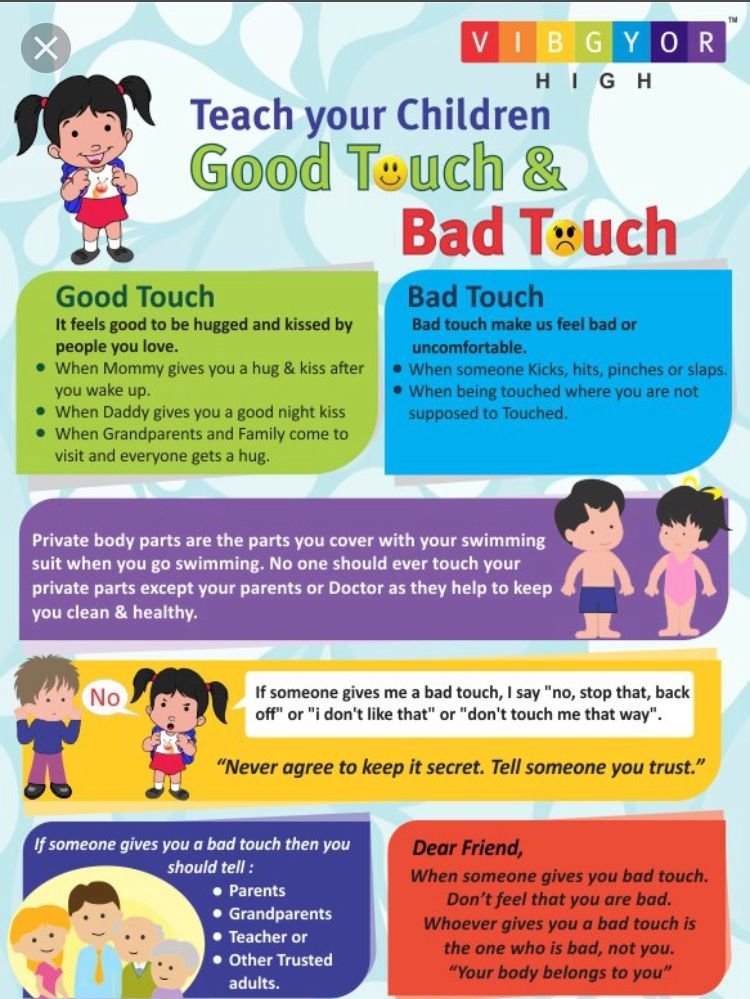The Foundation of Consent: What It Means and Why It Matters
The concept of consent is essential in understanding interpersonal relationships and individual autonomy. At its core, consent refers to the agreement between individuals, granting permission for certain actions or behaviors. It emphasizes the importance of mutual respect and individual choice, fostering a sense of security and empowerment in both children and adults. Teaching children about consent from an early age equips them with the knowledge to understand their rights and the rights of others, ultimately cultivating healthier relationships as they grow.
Consent is a fundamental right that every child should recognize and embrace. It promotes the notion that every individual has control over their body and their decisions. By instilling the principles of consent early, children learn that they can express their preferences and boundaries, reinforcing their sense of agency. This understanding is not only pivotal for their self-advocacy but also for fostering healthy interactions where the importance of personal boundaries is respected and acknowledged.
Moreover, teaching consent is critical for personal safety, as it helps children recognize uncomfortable situations and encourages them to speak up. By providing children with the vocabulary and framework to articulate their feelings and limits, they are better prepared to navigate complex social dynamics. For instance, when children learn that they have the right to say “no” to unwanted touches or interactions, they cultivate assertiveness and awareness of their personal space. This foundational knowledge helps in preventing potential abuse and ensures that they grow into confident individuals who respect not only their own autonomy but also that of others.
In summary, the foundation of consent matters significantly in a child’s development. By emphasizing its importance early on, we empower children to understand and advocate for themselves, setting the standards for respectful relationships throughout their lives.
Recognizing Red Flags: Situational Awareness and Pattern Recognition
Teaching children to recognize red flags in their environment and in interpersonal interactions is a vital component of their development. Situational awareness refers to the ability to identify, process, and comprehend information about the immediate surroundings, while pattern recognition involves the capacity to discern underlying themes or behaviors that may indicate inappropriate or harmful situations. By equipping children with these foundational skills, we empower them to navigate the complexities of social interactions safely.
One effective strategy is to encourage open discussions about feelings and perceptions. Parents and educators can create a safe space where children feel comfortable sharing their experiences and emotions. By engaging in role-playing exercises that simulate various scenarios, children can practice recognizing behaviors that may seem alarming or unsettling. This practical experience helps them become more attuned to their instincts, enhancing their ability to discern situations that may require caution.
It is essential to highlight specific red flags to watch for, such as body language, tone of voice, and inappropriate comments or actions from others. Children should be educated about the difference between safe and unsafe situations and provided with examples of both. This knowledge arms them with the confidence to identify situations that do not align with their comfort levels.
Additionally, fostering a culture of trust and communication at home and in educational settings is crucial. Children must know they can approach trusted adults to talk about any uncomfortable encounters without fear of judgment. This open dialogue reinforces the importance of their voice and reaffirms that it is valid to express concerns about their feelings and experiences, ultimately enabling them to act more confidently in unfamiliar situations.
Breaking the Silence: Addressing Family Dynamics and Consent
In exploring the sensitive topic of family dynamics in relation to consent, it is imperative to acknowledge the intricate relationships children have with family members. Often, societal norms elevate the authority and trust accorded to family, inadvertently leading to situations where inappropriate behavior may be overlooked or tolerated. Teaching children about consent must encompass the reality that even those who are close to them—such as parents, siblings, or extended family—can cross personal boundaries. Recognizing that discomfort is a valid emotion to express is the first step in empowering children.
Children should be encouraged to voice their feelings about any situation that incites unease. If a child feels pressured to act a certain way around a family member, or if they sense an obligation to respond to unwanted advances, it is crucial to approach these feelings with sensitivity and seriousness. These signs can indicate potential boundary violations, and it is vital to affirm that their feelings are legitimate. By fostering an environment where children learn to articulate and understand their emotions, we can help dismantle the stigma attached to reporting discomfort, thereby promoting a culture of open dialogue about consent.
Additionally, it is essential to challenge prevailing societal attitudes that trivialize or normalize inappropriate behaviors within familial relationships. A zero-tolerance stance against any form of misconduct must be established, reinforcing that trust should not equate to vulnerability. Children must understand that their voice holds weight and that they are entitled to protect their personal space, irrespective of the relationships involved. This approach contributes to a broader dialogue surrounding child safety and the importance of consent, ultimately enabling children to navigate complex familial dynamics with confidence and assurance.
Raising Advocates: Encouraging Children to Speak Up Against Injustice
Empowering children to find their voice is essential in helping them navigate a world that may sometimes present them with injustice or inappropriate behavior. Teaching children the importance of expressing their feelings and concerns in a safe environment can significantly influence their ability to advocate for themselves and others. This empowerment is critical, as it establishes a foundation for children to recognize and articulate their rights and feelings effectively.
Creating an environment where children feel comfortable speaking up involves more than just encouraging communication; it is about actively listening to them. Adults must prioritize open discussions, allowing children the space to express their thoughts without fear of judgment or dismissal. By fostering a culture of trust and respect, children are more likely to share their experiences and discomfort if they encounter troubling situations. Adults play a vital role in this process by modeling behavior that encourages accountability and respect for each person’s voice.
Moreover, it is essential for adults, particularly men, to challenge societal narratives that minimize or normalize predatory behavior. By actively opposing these narratives, adults not only protect children but also set powerful examples that reinforce the expectation of accountability. This involvement serves as a reminder that children have the right to speak out against injustices they witness or experience, reinforcing the narrative that their voices matter and deserve to be heard.
In essence, encouraging children to advocate for themselves and others aids in developing confident individuals who are unafraid to confront injustices. This advocacy is not limited to their own experiences but extends to recognizing the importance of standing up for their peers. As children learn to navigate difficult conversations and express their concerns, they will grow into adults who uphold the values of integrity, respect, and vigilance against injustice in their communities.


Leave a Reply